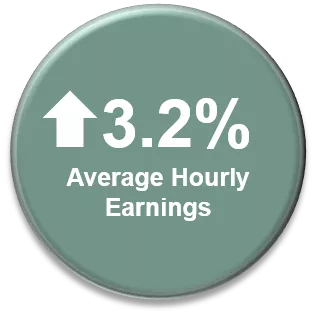Economic Commentary on December 2018 Employment Report
By John Beuerlein, chief economist, Pohlad Companies

Chief Economist
Pohlad Companies
As 2018 drew to a close, markets and investors were looking for less, not more, uncertainty as they enter 2019. The environment of uncertainty was highlighted by two somewhat conflicting reports on the economy received within the past week.
A hint of weakness in the manufacturing sector
A January 3 report indicated the ISM Manufacturing PMI in the U.S. fell to 54.1 in December from 59.3 in November. The December number was the weakest reading since November 2016 and the largest monthly drop since October 2008 as growth in new orders, production, and employment slowed sharply. This was the first time there has been meaningful weakness in the manufacturing sector since trade tensions developed last spring. The impact of tariffs and general uncertainty on trade policy were given as reasons for the weakness, and it was noted that supply chains were being materially affected. Credit markets reacted with yields on the 10-year Treasury falling 11 basis points (bps) to 2.55%. Ten-year yields had already fallen 58 bps from their November highs of 3.24%. U.S. equity markets fell 2.5%, reflecting concern that the economy was on the brink of slipping into recession as we enter 2019. Talk of the Fed putting their plans for increasing interest rates and reducing their balance sheet on hold was rampant.
Positive employment report offsets manufacturing weakness

January 4 featured the employment report for December, which presented data that was nearly 180 degrees from the concerning PMI report. Specifically, the Bureau of Labor Statistics reported that the labor market ended 2018 on a very strong note. Payrolls improved by the largest amount in 10 months, average hourly earnings rose 3.2 percent over the year—matching the largest 12-month growth in average hourly earnings since April 2009—and labor force participation was the highest in 15 months, indicating that there is still some slack in the labor market. A separate household survey released by the BLS showed that although the unemployment rate increased by 0.2 percentage points to 3.9% in December, it went up for the right reasons: more workers are coming off the sidelines and looking for work. Aggregate weekly payroll income over the past year improved 5.2% (3.2% from wage improvement and 2.0% from hours worked), suggesting support for continuing consumer expenditures, which represent 70% of the economy. Credit markets reversed their 11-bps decline of the previous day, and equity markets rallied 3.4%. What a way to end the first week of the new year!
Crystal ball shows tightening liquidity, close attention to inflationary pressures
While this data is impressive, the labor market is a lagging indicator. A better perspective on what lies ahead may be gained by looking at the growth rate of liquidity, both domestically and globally. On this point it is important to recognize that the balance sheets of the three largest central banks (the U.S. Fed, the Bank of Japan, and the European Central Bank) will, as a group, be contracting in 1Q-19 for the first time since 2008, effectively tightening liquidity. No surprise, then, that U.S. GDP is expected to slow in 2019. The Fed raised the Fed Funds rate to 2.50% in December for the fourth increase in 2018. As of now, the Fed has stated that they expect to make two increases in the Fed Funds rate in 2019, but the market is not expecting any. Not to be forgotten is the fact that the Fed continues to reduce its balance sheet by $50 billion per month—effectively tightening liquidity without ostensibly raising rates. General concerns about worldwide economic growth have kept commodity prices in check (down 10% in 2018) with oil prices down 25% for the year. Inflationary pressures, consequently, have remained subdued, but the strengthening in wage gains mentioned above will cause the Fed to keep an eye on any budding pressures. Assuming that the employment landscape remains healthy in the U.S., it is inflation expectations that will be the driver of how aggressively the Fed raises interest rates in 2019.